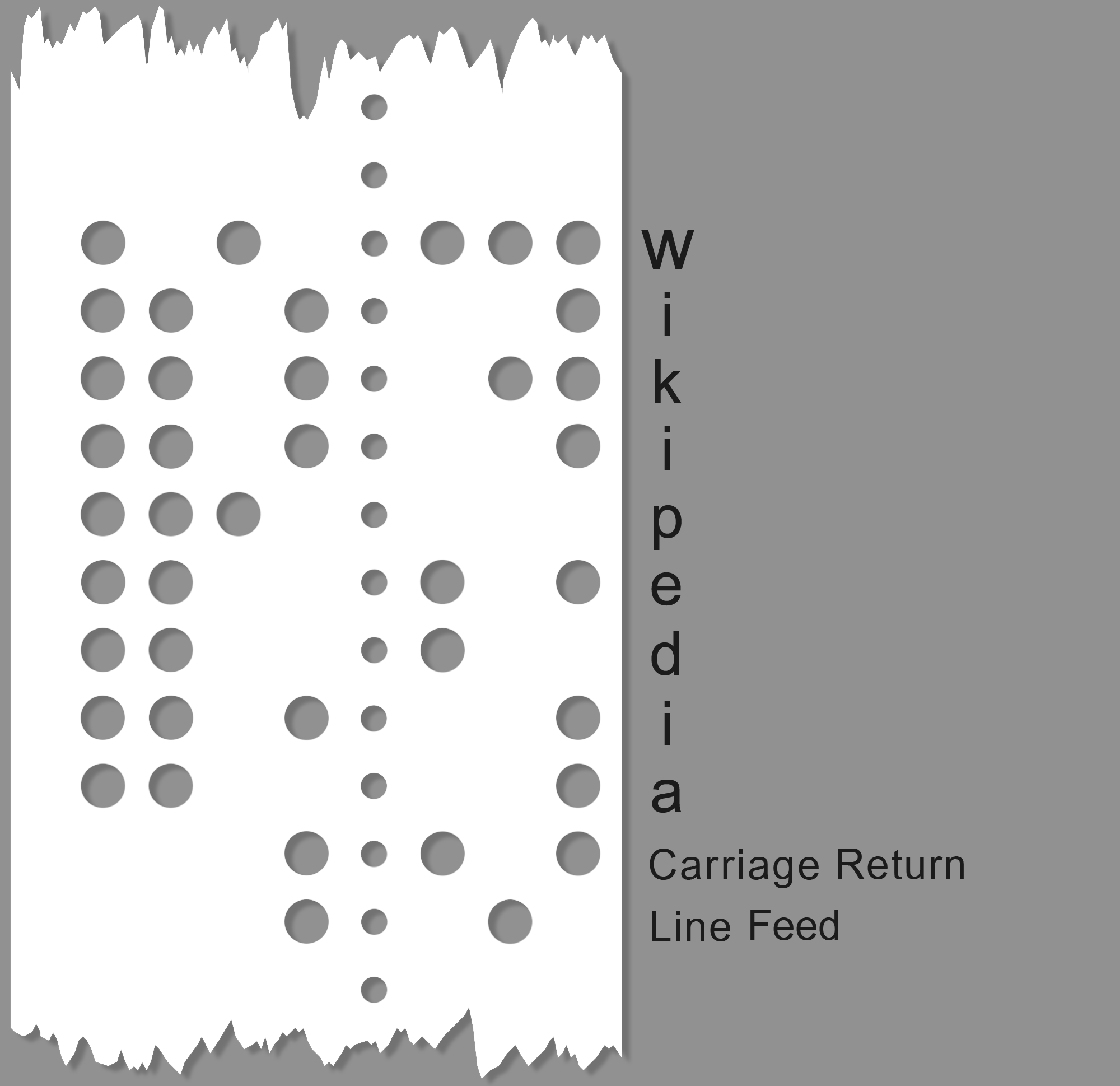|
Code Page 1011
The German standard DIN 66003, also known as Code page 1011 (CCSID 1011; abbreviated CP1011) by IBM, Code page 20106 (abbreviated CP20106) by Microsoft and D7DEC by Oracle, is a modification of 7-bit ASCII with adaptations for the German language, replacing certain symbol characters with umlauts and the eszett. It is the German national version of ISO/IEC 646 (ISO 646-DE), and also a localised option in DEC's National Replacement Character Set (NRCS) for their VT220 terminals. It is registered with the ISO-IR registry for use with ISO/IEC 2022 as ISO-IR-21. Kermit calls it , but also accepts the IANA-registered name . Other IANA-registered names include , and simply . Code page layout See also *National Replacement Character Set (NRCS) References External links DIN 66003 purchase pageAirport display mojibake arising from the differences between DIN 66003 and ASCII {{Character encoding 1011 Year 1011 ( MXI) was a common year starting on Monday of the Julian Ca ... [...More Info...] [...Related Items...] OR: [Wikipedia] [Google] [Baidu] |
Character Encoding
Character encoding is the process of assigning numbers to graphical character (computing), characters, especially the written characters of human language, allowing them to be stored, transmitted, and transformed using computers. The numerical values that make up a character encoding are known as code points and collectively comprise a code space or a code page. Early character encodings that originated with optical or electrical telegraphy and in early computers could only represent a subset of the characters used in written languages, sometimes restricted to Letter case, upper case letters, Numeral system, numerals and some punctuation only. Over time, character encodings capable of representing more characters were created, such as ASCII, the ISO/IEC 8859 encodings, various computer vendor encodings, and Unicode encodings such as UTF-8 and UTF-16. The Popularity of text encodings, most popular character encoding on the World Wide Web is UTF-8, which is used in 98.2% of surve ... [...More Info...] [...Related Items...] OR: [Wikipedia] [Google] [Baidu] |
ISO/IEC 2022
ISO/IEC 2022 ''Information technology—Character code structure and extension techniques'', is an ISO/ IEC standard in the field of character encoding. It is equivalent to the ECMA standard ECMA-35, the ANSI standard ANSI X3.41 and the Japanese Industrial Standard JIS X 0202. Originating in 1971, it was most recently revised in 1994. ISO 2022 specifies a general structure which character encodings can conform to, dedicating particular ranges of bytes ( 0x00–1F and 0x7F–9F) to be used for non-printing control codes for formatting and in-band instructions (such as line breaks or formatting instructions for text terminals), rather than graphical characters. It also specifies a syntax for escape sequences, multiple-byte sequences beginning with the control code, which can likewise be used for in-band instructions. Specific sets of control codes and escape sequences designed to be used with ISO 2022 include ISO/IEC 6429, portions of which are implemented by ANSI.SYS and t ... [...More Info...] [...Related Items...] OR: [Wikipedia] [Google] [Baidu] |
Backspace
Backspace (, ⌫) is the keyboard key that in typewriters originally pushed the carriage one position backwards, and in modern computer systems typically moves the display cursor one position backwards,The meaning of "backwards" depends on the direction of the text, and could get complicated in text involving several Bidirectional text, bidirectional categories. deletes the character at that position, and shifts back any text after"after" here implies on the same logical line of text that position by one character. Nomenclature Although the term "backspace" is the traditional name of the key which steps the carriage back and/orin some correcting typewriters it did both deletes the previous character, typically to the left of the cursor, the actual key may be labeled in a variety of ways, for example ''delete'', ''erase'', or with a left pointing arrow. A dedicated symbol for "backspace" exists as Miscellaneous Technical#Block, U+232B ⌫ but its use as a keyboard label is not univ ... [...More Info...] [...Related Items...] OR: [Wikipedia] [Google] [Baidu] |
Bell Character
A bell character (sometimes bell code) is a device control code originally sent to ring a small electromechanical bell on tickers and other teleprinters and teletypewriters to alert operators at the other end of the line, often of an incoming message. Though tickers punched the bell codes into their tapes, printers generally do not print a character when the bell code is received. Bell codes are usually represented by the label "BEL". They have been used since 1870 (initially in the Baudot code). To maintain backward compatibility, video display terminals (VDTs) that replaced teletypewriters included speakers or buzzers to perform the same function, as did the personal computers that followed. Modern terminal emulators often integrate the warnings to the desktop environment (e.g., the macOS Terminal will play the system warning sound) and also often offer a silent ''visual bell'' feature that flashes the terminal window briefly. Representations In ASCII the bell characte ... [...More Info...] [...Related Items...] OR: [Wikipedia] [Google] [Baidu] |
Acknowledge Character
In data networking, telecommunications, and computer buses, an acknowledgement (ACK) is a signal that is passed between communicating processes, computers, or devices to signify acknowledgment, or receipt of message, as part of a communications protocol. Correspondingly a negative-acknowledgement (NAK or NACK) is a signal that is sent to reject a previously received message or to indicate some kind of error. Acknowledgments and negative acknowledgments inform a sender of the receiver's state so that it can adjust its own state accordingly. Acknowledgment signal types The ASCII code point for ACK is 0x06 (binary 0000 0110). By convention a receiving device sends an ACK to indicate it successfully received a message. ASCII also provides a NAK code point (0x15, binary 0001 0101) which can be used to indicate the receiving device cannot, or will not, comply with the message. Unicode provides visible symbols for these ASCII characters, U+2406 (␆) and U+2415 (␕). ACK and NAK ... [...More Info...] [...Related Items...] OR: [Wikipedia] [Google] [Baidu] |
Enquiry Character
In computer communications, enquiry is a transmission-control character that requests a response from the receiving station with which a connection has been set up. It represents a signal intended to trigger a response at the receiving end, to see whether it is still present. The response, an answer-back code to the terminal that transmitted the WRU (who are you) signal, may include station identification, the type of equipment in service, and the status of the remote station. Some teleprinters had a "programmable" drum, which could hold a 20- or 22-character message. The message was encoded on the drum by breaking tabs off the drum. This sequence could be transmitted upon receipt of an enquiry signal, if enabled, or by pressing the "Here is" key on the keyboard. The 5-bit ITA2 has an enquiry character, as do the later ASCII and EBCDIC. In the 1960s, Digital Equipment Corporation, DEC routinely disabled the answerback feature on Teletype Model 33 terminals because it inter ... [...More Info...] [...Related Items...] OR: [Wikipedia] [Google] [Baidu] |
End Of Transmission Character
In telecommunications, an End-of-Transmission character (EOT) is a transmission control character. Its intended use is to indicate the conclusion of a transmission that may have included one or more texts and any associated message headings. An EOT is often used to initiate other functions, such as releasing circuits, disconnecting terminals, or placing receive terminals in a standby condition. Its most common use today is to cause a Unix terminal driver to signal end of file and thus exit programs that are awaiting input. In ASCII and Unicode, the character is encoded at . It can be referred to as , in caret notation. Unicode provides the character for when EOT needs to be displayed graphically. In addition, can also be used as a graphic representation of EOT; it is defined in Unicode as "symbol for End of Transmission". Meaning in Unix The EOT character in Unix is different from the Control-Z in DOS. The DOS Control-Z byte is actually sent and/or placed in files to i ... [...More Info...] [...Related Items...] OR: [Wikipedia] [Google] [Baidu] |
Start Of Text
The C0 and C1 control code or control character sets define control codes for use in text by computer systems that use ASCII and derivatives of ASCII. The codes represent additional information about the text, such as the position of a cursor, an instruction to start a new line, or a message that the text has been received. C0 codes are the range 00 HEX–1FHEX and the default C0 set was originally defined in ISO 646 (ASCII). C1 codes are the range 80HEX–9FHEX and the default C1 set was originally defined in ECMA-48 (harmonized later with ISO 6429). The ISO/IEC 2022 system of specifying control and graphic characters allows other C0 and C1 sets to be available for specialized applications, but they are rarely used. C0 controls ASCII defines 32 control characters, plus the DEL character. This large number of codes was desirable at the time, as multi-byte controls would require implementation of a state machine in the terminal, which was very difficult with contemporary electro ... [...More Info...] [...Related Items...] OR: [Wikipedia] [Google] [Baidu] |
Null Character
The null character is a control character with the value zero. Many character sets include a code point for a null character including Unicode (Universal Coded Character Set), ASCII (ISO/IEC 646), Baudot, ITA2 codes, the C0 control code, and EBCDIC. In modern character sets, the null character has a code point value of zero which is generally translated to a single code unit with a zero value. For instance, in UTF-8, it is a single, zero byte. However, in Modified UTF-8 the null character is encoded as two bytes : . This allows the byte with the value of zero, which is not used for any character, to be used as a string terminator. Originally, its meaning was like NOP when sent to a printer or a terminal, it had no effect (although some terminals incorrectly displayed it as space). When electromechanical teleprinters were used as computer output devices, one or more null characters were sent at the end of each printed line to allow time for the mechanism to return to the fir ... [...More Info...] [...Related Items...] OR: [Wikipedia] [Google] [Baidu] |
Columbia University
Columbia University in the City of New York, commonly referred to as Columbia University, is a Private university, private Ivy League research university in New York City. Established in 1754 as King's College on the grounds of Trinity Church (Manhattan), Trinity Church in Manhattan, it is the oldest institution of higher education in New York (state), New York and the fifth-First university in the United States, oldest in the United States. Columbia was established as a Colonial colleges, colonial college by royal charter under George II of Great Britain. It was renamed Columbia College (New York), Columbia College in 1784 following the American Revolution, and in 1787 was placed under Trustees of Columbia University in the City of New York, a private board of trustees headed by former students Alexander Hamilton and John Jay. In 1896, the campus was moved to its current location in Morningside Heights and renamed Columbia University. Columbia is organized into twenty schoo ... [...More Info...] [...Related Items...] OR: [Wikipedia] [Google] [Baidu] |




